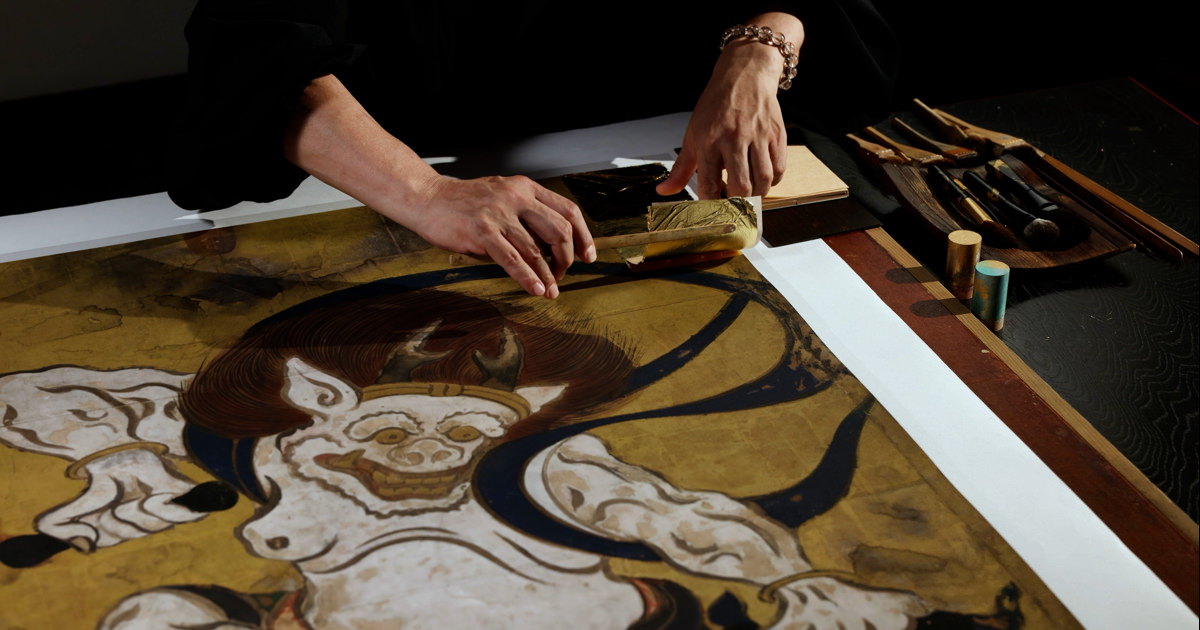Dragons and Clouds
High-resolution facsimiles
- Material
- printed on washi paper
- Period of creation
- Tsuzuri Project
Stage 2 2008–2009
Stage 4 2010–2011 - Recipient
- Kenninji Temple
Original
- Cultural property designation
- Important Cultural Property
- Artist
- Kaiho Yusho
- Historical era
- Azuchi-Momoyama (16th century)
- Material
- ink on washi paper
- Medium
- Eight sliding doors
- Size
- The west side four sliding doors: each H198.0 × W187.0 cm
The north side four sliding doors: each H186.0 × W133.0 cm - Collection
- Kenninji Temple
Description
When it comes to prominent painters during the Momoyama era, Kano school painters Eitoku and Sanraku quickly come to mind. However, it was Kaiho Yusho that would make a name for himself and leave a tremendous impact on the history of modern door and screen painting. The 50 panels painted inside the abbot‘s chamber at Kenninji became a lifetime monumental work for Yusho, and for the art. Eight of these panels focus on the dragon and clouds. Dragon and clouds were painted often, as were tigers, during the Muromachi era. Over the span of this panoramic screen, the dragon occupies an affirmative position. Contrasting techniques are employed in this work. The clouds are painted using only varying shades of gray, with no outlines. More liberal strokes are used to render the dragon. Yusho's skilled artistry expresses the weight of the picture's significance -- dragons are revered with deity for their legendary elusiveness from fire and calamities.
*In order to view videos, it is necessary to consent to the use of cookies by our website.
If the videos are not displayed, please click the “Cookie Settings” and accept cookies.




